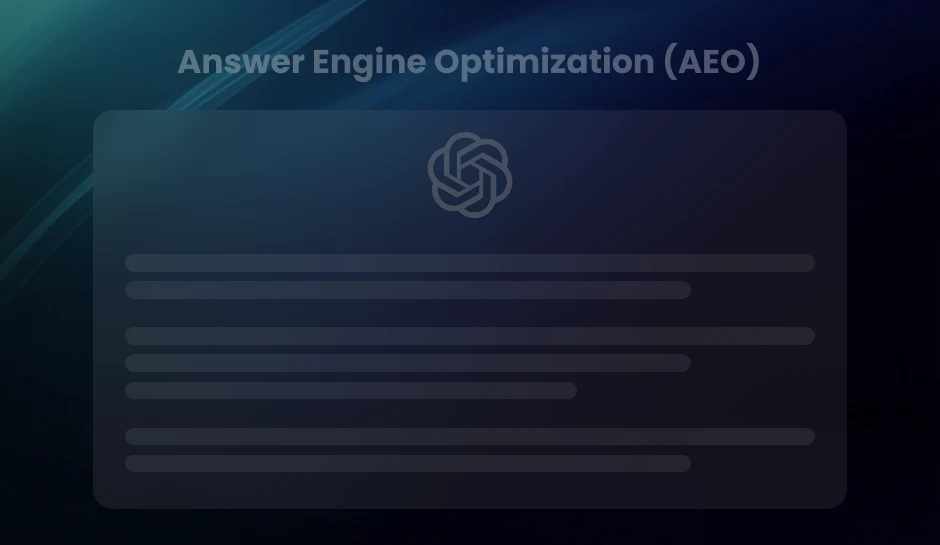
The Concept of Attribution Content in Social Media
Attribution in social media is crucial for understanding how user interactions lead to conversions. By tracing these touchpoints, marketers can optimize campaigns, allocate resources efficiently, and boost ROI. This blog explores various attribution models, the importance of content creators' recognition, and ethical considerations in digital content sharing, offering strategies for success.
Across the digital marketing landscape, social media stands as a cornerstone, driving conversations, building communities, and propelling brand growth. Within this dynamic ecosystem, understanding the pathways that lead to conversion unlocks the secrets of campaign effectiveness.
Attribution in social media is the analytical process that traces user actions back to the specific touchpoints that influenced their decisions. As visitors navigate through the vast expanse of digital content, pinpointing these moments provides marketers with insights to optimize their efforts, allocate budgets efficiently, and tailor strategies for maximum impact.
This blog post will demystify the complexities of social media attribution, explore diverse models employed by experts, and discuss the integration of technologies facilitating accurate tracking. Moreover, readers will gain insight into leveraging attribution data to enhance content strategy and boost return on investment.
Understanding Attribution in Social Media Content
Attribution serves as the backbone of content creation and sharing on social media platforms. Recognizing the source of information not only serves a legal purpose but also maintains the integrity and trustworthiness of the content disseminated. At its core, proper attribution safeguards the intellectual property rights of creators, enabling them to be acknowledged for their efforts and creativity.
Sharing content without crediting the originator can have significant social and ethical repercussions. The act tarnishes the trust between the audience and content providers and can lead to reputational damage for individuals and organizations alike. Moreover, failure to attribute correctly can lead to legal consequences, reflecting the gravity of respecting intellectual property on digital platforms.
- When content is shared with proper endorsement, creators receive the recognition they deserve.
- Disregarding attribution could potentially diminish the incentive for original content creation.
- Uncredited sharing cultivates an environment where misinformation can spread unchecked.
Digital conversations thrive on the contributions of individuals who add value through their creativity and insights. Proper attribution reinforces transparent and ethical content sharing, nurturing a culture of respect and acknowledgment in the ever-expanding social media landscape.
Pro Tip- Always credit the original creator when sharing content—tag their profile, include their name, or link to the source. This simple step fosters trust, upholds integrity, and nurtures a respectful digital community.
The Pivotal Influence of Content Creators and Influencers on Social Media
Content creators and influencers shape social media trends, creating a ripple effect of influence on their sizable audiences. With each post, they guide discussions, embed brand placements, and sway public opinion. Their content, often emulated or shared, becomes the cornerstone of a digital culture that thrives on interactivity and engagement.
The Influence of Content Creators and Influencers
Diverse and expansive, the reach of content creators and influencers extends beyond mere content and sets the bar for innovation and relevance in a digital-first world. Their followers look to them not just for entertainment but for recommendations, reviews, and insights into the latest trends.
They pioneer social media movements, champion causes, and inadvertently, lead marketing campaigns that are analyzed and replicated.
Attribution: A Cornerstone of Credibility
Clear attribution ties back to the core values of credibility and authenticity. Recognizing original creators not only respects their intellectual property but fosters a culture of trust and transparency within the community.
Failing to properly credit is often met with immediate backlash, tarnishing reputations, and fracturing relationships with audiences. A single omission can lead to questions about the integrity of all content shared thereafter.
- Content creators and influencers often curate and share third-party content, making attribution a regular practice to avoid intellectual property infringement.
- Authenticity in influencer marketing hinges on transparent relationships and honest endorsements-proper attribution underpins this trust.
- Credibility and reputation are contingent on the continuous and reliable attribution of sources, ensuring creators receive due recognition for their work.
Acknowledging sources maintains the ecosystem’s balance, where content is freely shared yet creators are valued and respected for their contributions. This cycle of creativity and recognition is a pillar that sustains the collaborative nature of social media.
Pro Tip- Boost credibility and trust by consistently attributing original creators in your posts. Transparent crediting not only protects intellectual property but also enhances your reputation as a responsible and authentic influencer or content creator.
Deciphering Social Media Attribution Models
Attribution modeling is a critical facet of digital marketing that assigns credit to different touchpoints along the customer’s journey. By pinpointing which interactions contribute most to conversions, marketers can distribute resources more effectively to optimize campaign performance.
Applications of Various Social Media Attribution Models
Diverse attribution models offer insights tailored to different marketing objectives and funnel dynamics. To understand their practical applications within social media, examining each model’s approach is necessary.
Last-touch Attribution
The last-touch model assigns conversion credit to the final touchpoint before a conversion. In the scope of social media, if a user clicks on a Facebook ad and makes a purchase, the last-touch attribution will ascribe the sale solely to that ad. Its simplicity aids in straightforward analysis but may overlook preceding touchpoints that nurtured the customer’s decision.
Multi-touch Attribution
- Linear: Credits are evenly distributed across all touchpoints.
- Time Decay: Greater value is given to interactions closer in time to the conversion.
- Positional: A hybrid approach that values both the first interaction and conversion while assigning fractional credit to the remaining touchpoints.
Multi-touch models reflect the complex nature of social media interactions by recognizing each engagement’s role, contrary to the last-touch model’s singular focus.
Data-driven / Algorithmic Attribution
This model utilizes machine learning to quantify the influence of each touchpoint, producing a customized model built on your data. It often delivers the most precise reflection of performance, as it continuously learns and adapts to new patterns in user behavior.
Assessing Model Accuracy and Data Representation
In evaluating these models, consider the granularity of data and adaptability to change. Last-touch attribution may lead to skewed resource allocation due to its oversimplified view. Multi-touch attribution, although more comprehensive, also possesses limitations, with methods like linear or time decay potentially discounting the importance of pivotal interactions.
Data-driven attribution offers a nuanced understanding but requires extensive data inputs and computing power, which may present challenges for smaller enterprises.
Pro Tip- Choose an attribution model that aligns with your marketing goals and funnel complexity. For precise insights, consider starting with multi-touch or data-driven models, as they offer a more holistic view of your social media impact compared to last-touch models.
Measuring the Impact of Social Media Campaigns
Quantifying the success of social media initiatives demands a rigorous approach. Attribution data serve as the foundation for understanding not only the performance of content but also the nuances of customer journeys. To accomplish this, a variety of methods come into play that reflect the contributions of each touchpoint in the pathway to conversion.
Methods to Quantify Social Media Success
Achieving a clear view of campaign performance involves monitoring specific metrics. Conversion rates, for instance, offer insights into the percentage of audience members that take a desired action after engaging with social media content.
Tracking click-through rates (CTRs) provides concrete evidence of the effectiveness of content in encouraging audience engagement. Meanwhile, advanced analytics tools can attribute sales back to the initial social media interaction, thus confirming the direct financial impact of campaigns.
Comparing the lift in brand search volume during the period of a social media campaign against a baseline period reveals the extent of brand awareness generated. The assessment of customer engagement levels through likes, shares, and comments details the content’s resonance.
Seamless integration of social media attribution data with customer relationship management (CRM) systems further enhances the depth of analysis, linking social media efforts directly to customer behavior and sales outcomes.
Understanding Customer Journey through Attribution
Attribution plays a decisive role in delineating the customer journey. By analyzing the touchpoints a customer interacts with before making a purchase, marketers can discern which aspects of the social media campaign are most effective. This journey mapping offers the clarity needed to optimize content and channel strategies, by pinpointing areas that influence decision-making.
- The use of multi-channel funnels in analytics platforms lays out the path through which conversions occur, identifying critical engagement points.
- Comparison modeling allows for different attribution models’ influence on the value ascribed to touchpoints to be understood, helping marketers adjust their approaches strategically.
- Cohort analysis segments users based on behaviors or characteristics, yielding refined insights into content performance across various audience demographics.
Reviewing attribution in concert with engagement metrics leads to an informed adjustment of content strategy. Such adjustments can range from the timing of posts to the type of media used.
Employing A/B testing with different variations of content gauges the impact of specific elements on campaign performance. Tailored content to the platform maximizes engagement and facilitates a deeper understanding of platform-specific customer behavior.
Understanding the attribution landscape allows marketers to enhance their strategies, ensuring that social media’s potential as a vital channel for customer engagement and conversion is fully realized.
Pro Tip- Leverage insights from multi-channel funnels, cohort analysis, and A/B testing to refine your content strategy, ensuring that each touchpoint maximizes engagement and drives conversions effectively.
User-Generated Content and Ownership Issues
With the rise in user-generated content, delineating ownership rights has become a maze of legal considerations and ethical standards. Platforms thrive on contributions from their users, yet the individual creator’s rights can become blurred in the process. This segment delves into the implications of content possession within the user-generated arena.
The Complexity of Ownership in User-Generated Content
User contributions on social media platforms present a unique challenge, as these platforms often require users to grant a license to the platform to use their content in various ways. Such provisions can seem innocuous but may confer broader rights to the platform than users anticipate.
Fostering User Participation vs. Intellectual Property Protection
Encouraging active participation from users requires a balance with safeguarding their intellectual property. Social media platforms implement policies that aim to respect copyright while providing a framework for extensive user engagement. The specifics of these policies can significantly influence user behaviors and content creation trends.
Real-Life Implications for Creators
- A user who posts original artwork could see their work redistributed without proper credit or compensation, raising questions about the ethical use of user-generated content.
- An influencer may use a fan’s suggestion for a post and gain significant engagement, leading to debates over the originator’s recognition.
Digital platforms inherently complicate the return of adequate credit to content originators. How should contributions be acknowledged when they are modified, shared, or incorporated into new works? The answer hinges on evolving legal frameworks and platform policies.
Brands and creators alike strive to leverage user-generated content without overstepping legal boundaries or alienating their audience. The dynamics of content sharing and ownership continue to undergo scrutiny as users and creators assert their rights within the digital ecosystem.
Pro Tip- Before sharing or repurposing user-generated content, obtain explicit permission and provide proper credit. Clear communication and adherence to platform policies and copyright laws not only protect you legally but also foster goodwill and trust within your audience.
Digital Rights Management in Social Media
Digital Rights Management (DRM) tools serve as a shield guarding content against unauthorized use and distribution on social media platforms. These tools attach a persistent form of digital identification to various media types, embedding the content with specific usage rules. Consequentially, DRM creates barriers to copying, sharing, and altering content without proper accreditation. By coding the content with protection measures, creators maintain control over their intellectual assets.
The effectiveness of DRM in minimizing uncredited content sharing on social media networks cannot be overstated. For instance, when DRM is applied to a video clip, the software typically prevents the video from being played on unauthorized devices or platforms.
Therefore, this mechanism restricts the potential for copyright infringement and unauthorized sharing, providing traceability and ensuring that original creators receive due recognition for their works. Compliance with DRM protocols can prevent legal disputes and foster a respect-driven content ecosystem.
- DRM tools track and manage the licensing of content, offering creators peace of mind concerning their digital assets.
- Robust DRM systems not only prevent unauthorized use but also facilitate the monetization of digital content by simplifying the licensing process.
- By applying DRM solutions, creators can expand their content’s reach while safeguarding against misuse, thus ensuring their brand and reputation remain untarnished.
With the proliferation of high-speed internet and sophisticated sharing tools, DRM stands as a necessary component of content security. Although no system can guarantee complete invulnerability to infringement, the deterrent effect of DRM makes it a formidable opponent against uncredited content sharing.
Beyond prevention, DRM serves to educate users about the legal and ethical implications of sharing content without appropriate attribution-cultivating a digital environment where creativity and intellectual property are properly valued.
Pro Tip- Implement DRM tools as part of your content strategy to safeguard your digital assets while enabling controlled sharing. By embedding usage rules directly into your content, you not only deter unauthorized use but also promote ethical content practices and protect your brand’s integrity.
Ethical Considerations in Content Sharing
When navigating the complexities of social media, users confront ethical dilemmas concerning the use and sharing of content. Where legislation may fall short or seem ambiguous, ethical practices serve as a guide for navigating these uncertainties. By understanding the responsibility inherent in sharing content, users contribute to a respectful and fair online environment.
Address Ethical Dilemmas in the Use and Sharing of Social Media Content
Considering the nuances of ethical content sharing requires a deep dive into the consequences of one’s actions online. However difficult, users must ask themselves about the repercussions their sharing might have on the original content creators. For instance, sharing an image without proper credit may seem innocuous but could lead to reputational and financial impacts for the creator.
- Are the original creator’s wishes being honored?
- Does the shared content potentially harm the reputation or income of the creator?
- Are modifications to the original content made and does this alter the creator’s intended message?
Advocate for Responsible Sharing Practices That Respect Original Content Creators
Advocacy for responsible sharing transcends individual practices and becomes a collective effort to uphold the integrity of creative works. Acknowledging creators not only validates their efforts but also fosters a culture of respect and professionalism. Engaging with content through an ethical lens invariably enhances the social media landscape’s vibrancy and respects intellectual property rights.
- Highlighting the creator’s name and source when sharing their work.
- Refraining from altering the original content without permission.
- Seeking explicit consent for uses not protected under fair use doctrine or similar provisions.
By integrating these considerations into daily practices, users can confidently navigate the social media space knowing they are contributing to a culture that values and respects the work of content creators.
Pro Tip- Before sharing any content, pause to consider the impact on the original creator. Always credit the source, seek consent for modifications or commercial use, and ensure your actions align with ethical sharing practices.
Mastering the Art of Attribution in Social Media
Accurate attribution on social media not only acknowledges the original creators but also maintains the integrity of digital content ecosystems. For marketers, leading by example in proper crediting sets a standard for content consumption and creation.
Attribution and Crediting Best Practices
- Always provide a direct link to the source of the original content, enabling users to access the primary material quickly.
- When utilizing user-generated content, obtain permission from the content creator before sharing, even in cases where the platform’s terms of service might suggest otherwise.
- Include clear and visible credits for the creator, using methods like tagging their social media profile or mentioning them in the caption.
- For visual content such as images or videos, integrate text-based credits within the content itself when republishing occurs on platforms that might separate descriptions from media.
- Recognize the rights of photographers, illustrators, and graphic designers by properly crediting them, just as you would credit authors of written work.
- Ensure that attributions remain intact when content is shared or reposted by your followers, advocating for the continuous recognition of the original creator.
- In the case of collaborative projects, highlight all contributors’ roles, providing a holistic view of the content’s creation.
- For modified or derivative works, clarify the nature of your contributions without detracting from the acknowledgment of the source.
- Stay current with social media platforms’ terms of service and copyright policies to ensure compliance with evolving digital rights regulations.
- Respect the intentions of content creators who may not wish for their work to be shared outside its original platform or context by adhering to stated preferences.
Marketers possess the capability to establish precedent in the respectful and ethical sharing of content. By implementing these guidelines, they advocate for a culture of proper attribution that benefits creators and users alike, upholding the creative ecosystem’s integrity.
Steps for Incorporating Attribution into Your Social Media Strategy
- Select an Attribution Model: Begin by choosing an attribution model tailored to your marketing objectives touch, last touch, linear, time-decay, or position-based.
- Clear Tracking Parameters: Use UTM (Urchin Tracking Module) codes to monitor traffic sources and user behavior effectively. These codes appended to your URLs will provide granular insights into the performance of individual social media posts.
- Automate Data Collection: Utilize marketing automation tools to effortlessly gather data and insights. Such tools can also help in segmenting the audience based on their interactions with your posts.
- Analyze and Optimize: Continuously review the data to ascertain which types of content drive the most valuable actions. Utilize these insights to optimize future content and campaigns.
By deploying these strategies, you will refine your social media campaigns, driving both engagement and conversions with greater precision.
Adopting Algorithmic Techniques
The use of algorithmic techniques can significantly enhance the accuracy of attribution in social media. Algorithms can dissect large datasets to attribute customer interactions back to the correct source, often in real-time. These sophisticated systems can detect complex patterns that might elude manual analysis, thereby painting a more accurate picture of customer journey and content performance.
Deploying algorithmic attribution lets you attribute value to all touchpoints in the customer journey, understanding each post’s role in the conversion process. You can thus tailor your strategy with knowledge of which platforms and content types are most effective for your goals.
With the right approach to social media attribution, you foster accountability and optimize ROI. Engage with customers more personally and grow your brand while making data-backed decisions that propel your online presence forward.
Mastering the Art of Social Media Attribution
Attribution in social media stands as a cornerstone for fostering trust, ensuring legal compliance, and establishing transparent relationships with audiences. Understanding the nuances of social media attribution allows content creators, influencers, and brands to navigate the intricate web of digital content sharing. By adopting established attribution models, stakeholders can measure the influence of their campaigns effectively, thereby optimizing their strategies for maximum impact.
Incorporating user-generated content necessitates a robust understanding of copyright laws and ethical considerations, ensuring that original creators are fairly credited. Meanwhile, the integration of Digital Rights Management tools helps safeguard original content and intellectual property within the fluidity of social media platforms.
Proper credit for content is more than a mere legal formality; it directly influences engagement and fosters a level of respect between content creators and their audience. By implementing and adhering to best practices for content attribution and crediting, social media marketers can amplify their reach while cultivating an atmosphere of authenticity and respect.
Looking at the substantial role attribution plays in boosting audience trust and engagement, implementing best attribution practices is not an option but a strategic necessity. Establishing clear attribution guidelines within your social media strategy will not only mitigate legal risks but also contribute to stronger, more meaningful connections with your followers.
Key Takeaways
- Proper attribution enhances credibility, strengthens brand reputation, and fosters trust between content creators and their audience.
- Selecting a suitable model (e.g., last-touch, multi-touch, or data-driven) is crucial for accurately assessing the effectiveness of social media campaigns and optimizing marketing strategies.
- Ethical content sharing and adhering to copyright laws ensures creators are fairly credited and protects intellectual property in the digital space.
- Using attribution insights helps marketers fine-tune content and campaigns, leading to better resource allocation, higher engagement, and improved ROI.
Are you ready to elevate your social media content’s credibility and strengthen its impact?
Engage with our team at DiGGrowth to connect with your audience on a foundation built upon respect for creativity and legal integrity. Drop us a line at info@diggrowth.com to get started.
Ready to get started?
Increase your marketing ROI by 30% with custom dashboards & reports that present a clear picture of marketing effectiveness
Start Free Trial
Experience Premium Marketing Analytics At Budget-Friendly Pricing.

Learn how you can accurately measure return on marketing investment.
Additional Resources
Don’t Let AI Break Your Brand: What Every CMO Should Know
AI isn’t just another marketing tool. It’s changing...
Read full post postFrom Demos to Deployment: Why MCP Is the Foundation of Agentic AI
A quiet revolution is unfolding in AI. And...
Read full post postAnswer Engine Optimization (AEO): The New Frontier of SEO in 2025
As digital experiences continue to evolve, so does...
Read full post postFAQ's
Attribution in social media marketing refers to the process of identifying and assigning credit to the touchpoints or interactions that lead a user to convert, whether by making a purchase, signing up, or taking other desired actions. It helps marketers understand which platforms, content, and engagement types are most effective in driving conversions.
Attribution is essential for understanding the customer journey and determining which social media interactions most significantly contribute to conversions. It allows marketers to allocate resources more efficiently, optimize content strategies, and measure the return on investment (ROI) of social media efforts.
Common attribution models include: Last-touch attribution: Credits the final interaction before conversion. Multi-touch attribution: Distributes credit across various touchpoints, reflecting the complexity of the customer journey. Data-driven attribution: Uses machine learning to assign credit based on data patterns, providing a customized model of influence.
Multi-touch attribution recognizes that customer journeys often involve multiple interactions before a conversion. It credits each touchpoint in the journey, either equally (linear), based on timing (time decay), or focusing on the first and last interactions (positional). This model provides a more comprehensive understanding of campaign performance than last-touch attribution.
Marketers can improve attribution accuracy by: Implementing clear tracking parameters (e.g., UTM codes) to monitor user interactions. Choosing an attribution model that aligns with campaign objectives. Using advanced analytics tools, integrating data across platforms, and employing algorithmic techniques for a more nuanced, data-driven approach. Continuously reviewing attribution insights to optimize future content and resource allocation.


